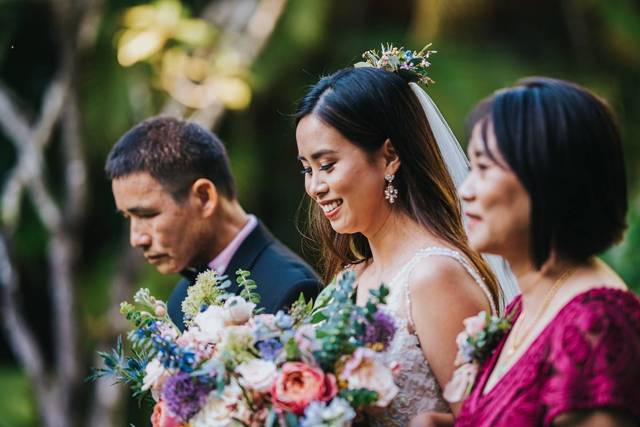
One of the most-asked wedding questions is, “What’s the wedding processional order for the ceremony?” The answer: your wedding ceremony order will be decided by a few different factors, including your religious affiliation, the people who are part of your wedding party, your family members, and more. But before we dive into the specifics of who walks down the aisle and when, it’s important to understand exactly what a wedding processional is.
What is a wedding ceremony processional?
The wedding processional refers to the moment when you and your partner walk to the altar at the start of your wedding ceremony. It takes place after all of your guests have arrived and are seated. In addition to you and your partner, your wedding party and close family members—most importantly, your parents or parent-figures—will take part in the processional, along with your wedding officiant. The wedding processional is often accompanied by music, either a traditional instrumental song (like “Canon in D” or the “Wedding March”) or another wedding processional song that holds personal significance.
Depending on your religion and/or personal preferences, there are a few different ways to arrange your wedding processional order. Are you having a Christian or Jewish wedding ceremony? If so, each of these religions has its own guidelines surrounding the order of walking down the aisle and what side each family should be seated on. It’s important to discuss your wedding processional order with your officiant to get an understanding of what is traditional for your culture as well as the details you can customize—for example, if a bride wants her father and stepfather to escort her down the aisle, she may enter the ceremony venue with her stepfather and halfway down the aisle meets her father who will escort her to the altar.
If there are family members you want to honor who are not part of the wedding party, you may have them precede the wedding party down the aisle. They would walk down the aisle before the mothers of the couple in a Christian ceremony and before the Rabbi and Cantor in a Jewish ceremony.
The wedding processional is different from the wedding recessional, which is when you walk down the aisle following the conclusion of the ceremony as a married couple.
Wedding Processional and Ceremony Orders, Explained
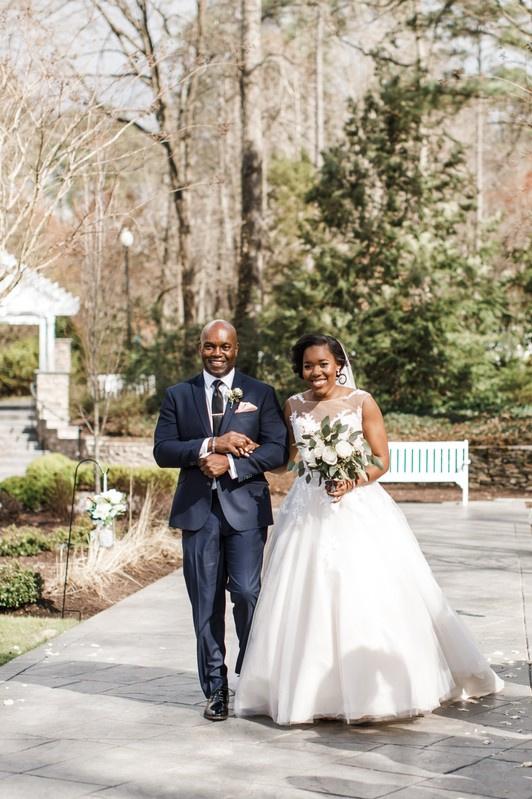
Christian Wedding Ceremony Processional Order
The following wedding ceremony order can be used for Christian denominations:
1. Groom’s parents
It’s optional to honor the groom’s parents by having them walk down the aisle. They can be seated after all of the guests and before the mother of the bride.
2. Mother of the bride
The mother of the bride is the last person seated before the officiant, groom and best man take their places at the altar. She can walk alone or be escorted by her son, son-in-law or another relative. She is seated on the left side in the first row.
3. Officiant
The officiant enters before the wedding party and awaits the couple at the altar.
4. Groom and best man
Enter the ceremony venue and stand at the altar
5. Bridesmaids and/or groomsmen
Walk down the aisle in pairs or if an odd number of members individually or in a group of three
6. Maid or matron of honor
It’s a misconception that the maid of honor walks with the best man during the processional—in reality, she walks down the aisle alone (it’s understandable to be nervous!).
7. Ring bearers and flower girls
Children can walk in pairs, or the ring bearer(s) can enter right before the flower girl(s).
8. The bride and father of the bride
The bride walks on her father’s right side. During the ceremony, the bride stands on the left (if you are looking toward the altar from where guests are seated) and the groom stands on the right, both facing the officiant.
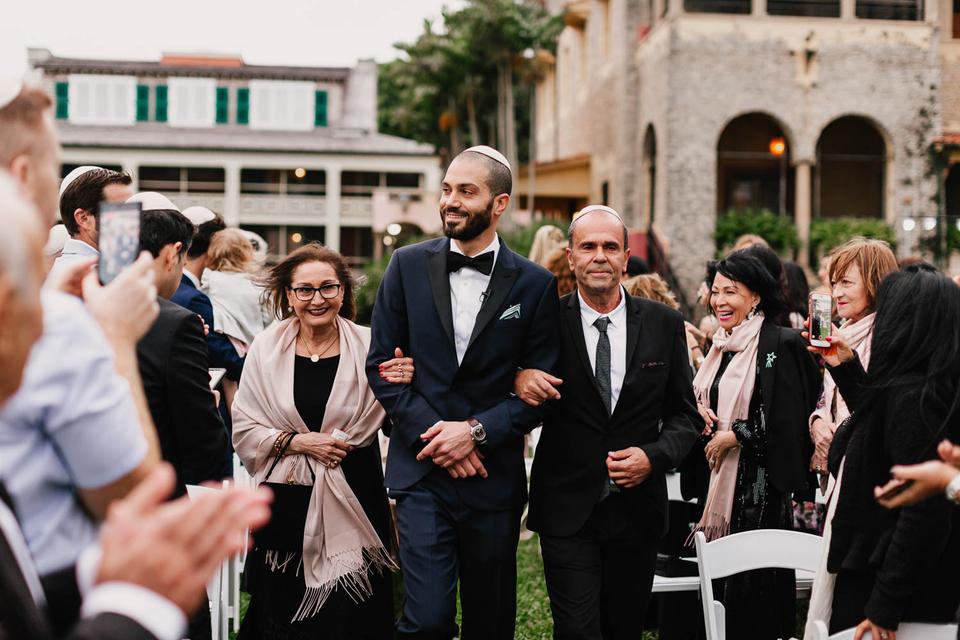
Jewish Wedding Ceremony Processional Order
A Jewish wedding ceremony is held beneath a chuppah. The couple will stand with the best man and maid of honor as well as their parents during the ceremony. Grandparents take seats in the front row after they walk down the aisle. Members of the wedding party can stand to the sides of the chuppah (groomsmen on the left, bridesmaids on the right) or they can be seated in the first row. Depending on the religious service of your wedding ceremony, a Jewish wedding processional order may vary slightly from the following:
1. Rabbi and cantor
They can either walk down the aisle before the wedding party or enter the room from the side and stand at the altar.
2. Grandparents
The bride’s grandparents are followed by the groom’s grandparents.
3. Wedding party
A Jewish ceremony has two options for bridesmaids and groomsmen. Groomsmen can follow the groom’s grandparents and precede the best man. Next, the bridesmaids follow the groom and his parents. Alternatively, bridesmaids and groomsmen can be paired together, following the groom’s grandparents and walking down the aisle before the best man. If there are an odd number of people, there can be a group of three who walk together.
4. Best man
Walking alone, he precedes the groom and his parents
5. Groom
The groom walks down the aisle with both of his parents, his father on his left arm and mother on his right
6. Maid or matron of honor
Walks down the aisle on her own
7. Ring bearer and flower girl
Children can walk together or the ring bearer walks ahead of the flower girl
8. Bride
The bride walks down the aisle escorted by both of her parents with her father on her left arm and mother on her right.
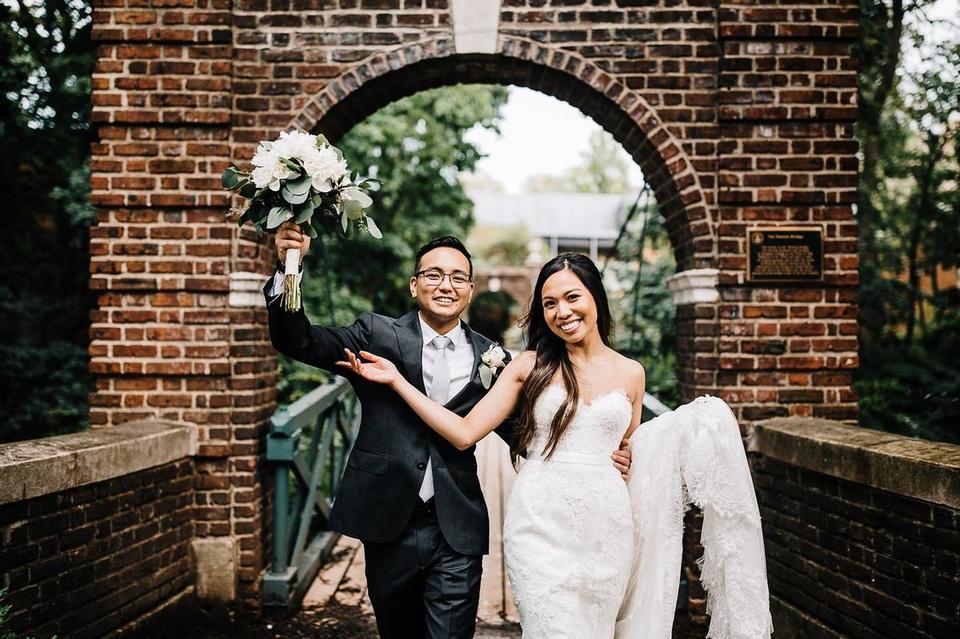
Civil Ceremony Wedding Processional Order
If you’re having a civil, non-religious, wedding ceremony, you can choose any processional order you want. If you don’t know where to begin, start with either of the above religious wedding ceremony orders, then add or change elements to create a customized order that works best for your own wedding.
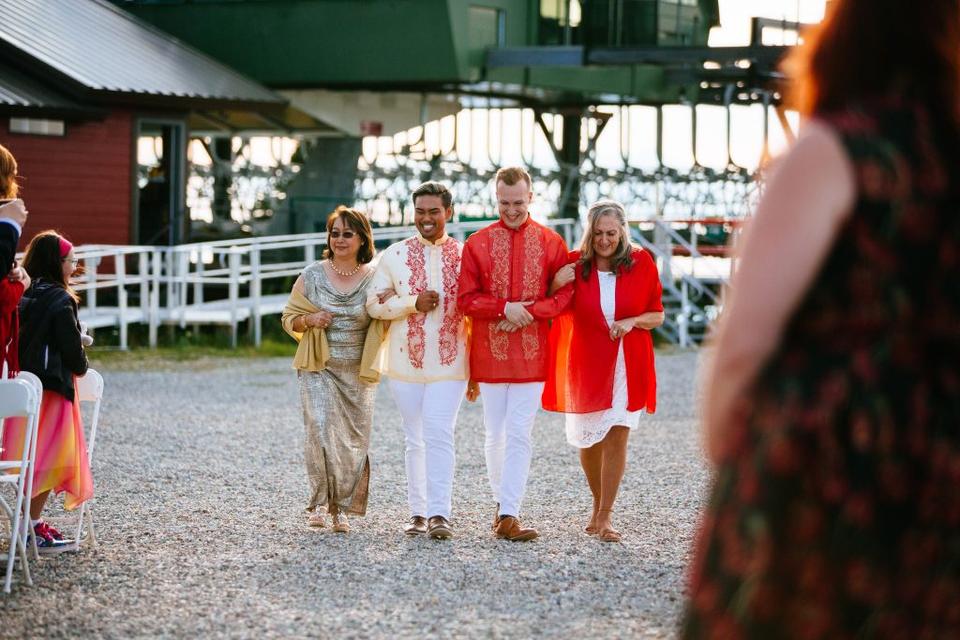
Same-Sex and LGBTQ+ Wedding Processional Order
Same-sex couples can organize a wedding processional order that reflects the religious service of their ceremony and/or personal preference, or you can choose to forego tradition altogether. You can walk down the aisle together or individually, either on your own or escorted by loved ones, such as parents or friends. Some same-sex couples create two aisles that allow the couple to walk down each aisle at the same time and meet together at the altar.
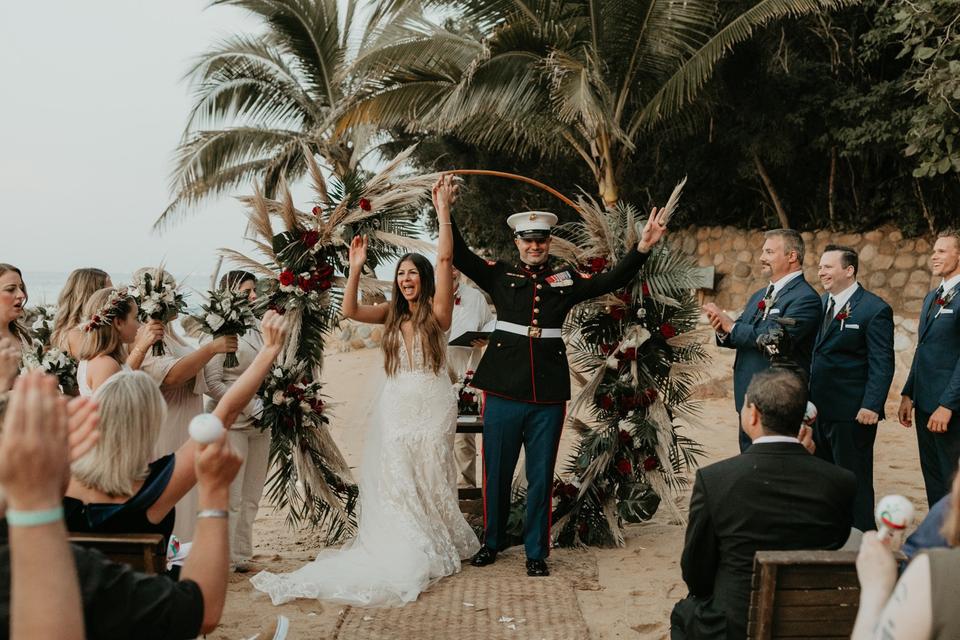
Military Wedding Processional Order
A military wedding ceremony can be a civil or religious service. Couples having a military ceremony can follow the religious guidelines set by their faith or create a wedding processional order that reflects their wedding party.
































